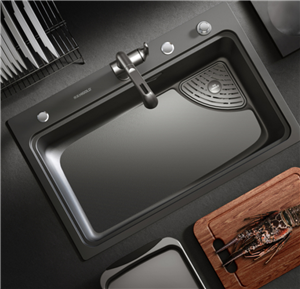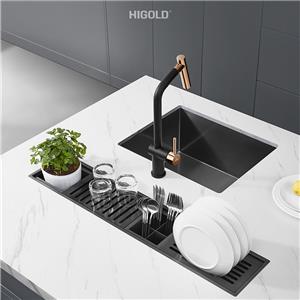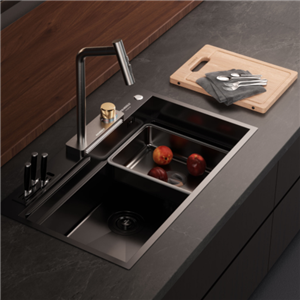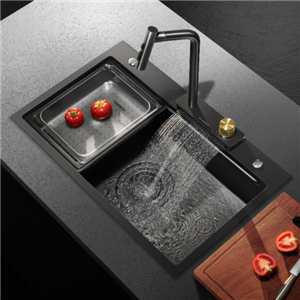What are the most popular kitchen stainless steel sink styles?
As a core component of kitchen design, kitchen stainless steel sinks not only play a key role in function, but also directly affect the overall beauty and user experience of the kitchen. With the continuous changes in kitchen decoration styles and consumer needs, the styles and materials of sinks are also constantly innovating. Different sink styles have their own unique advantages and applicable scenarios, becoming an important element that cannot be ignored in kitchen design.
This article will discuss in detail the most popular kitchen stainless steel sink styles, conduct a comprehensive analysis from different design, material, function and other perspectives, help consumers understand the characteristics of various sink styles, and make the best choice according to their needs.

Single-bowl stainless steel sink
The single-bowl stainless steel sink is one of the most classic kitchen stainless steel sink styles. It is usually designed as a large container without partitions, providing a spacious cleaning space. Single-bowl stainless steel sinks are suitable for kitchens with small spaces and large areas of operation, especially in modern urban apartments.
1. Advantages of single-bowl stainless steel sinks
● Spacious space: The single-bowl is designed as a large space, which is very suitable for washing large kitchen utensils, tableware or washing a large amount of food.
● Simple design: There is no partition, the whole sink looks simple and clean, suitable for modern kitchen style.
● Easy to clean: Single-bowl stainless steel sinks are easier to clean because there are no gaps and partitions, the sink is smooth as a whole, and it is easy to wipe and clean.
2. Applicable people for single-bowl stainless steel sinks
Single-bowl stainless steel sinks are very suitable for families who pay attention to the use of kitchen space and need a large cleaning space, especially for families who cook frequently and have a large workload in the kitchen. Due to its simple and practical design, single-bowl stainless steel sinks are very popular in modern urbanized kitchens.
3. Disadvantages of single-bowl stainless steel sinks
● Insufficient separation function: For some users who need to divide the sink into a cleaning area and a rinsing area, the single design of a single-bowl stainless steel sink may not meet the needs.
● Overflow problem: Since there is no partition, the cleanliness of the sink may be affected when washing larger or dirty items, especially when water and dirt are mixed.
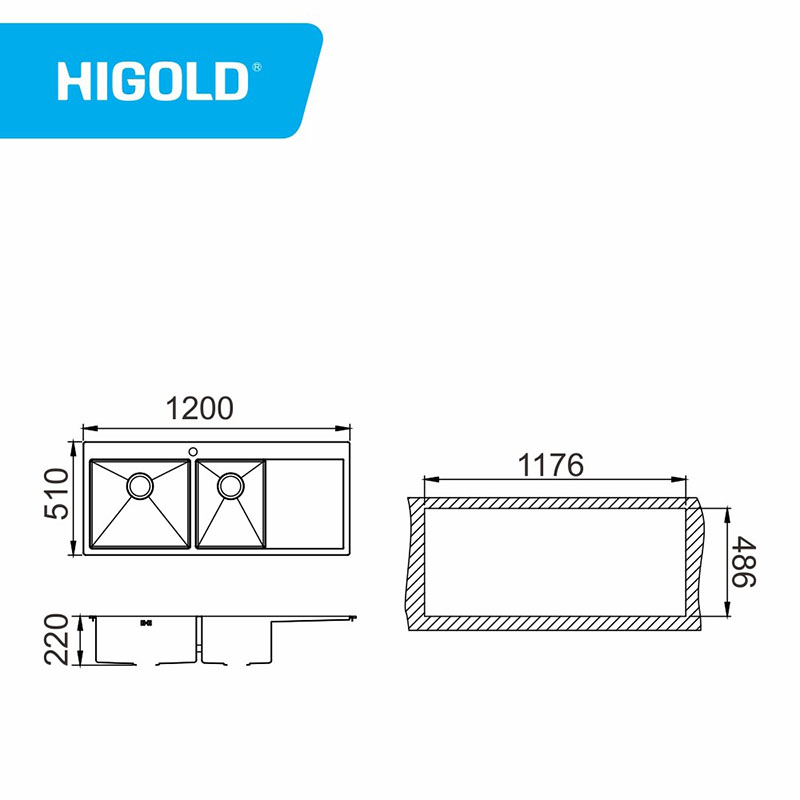
Double-trough stainless steel sinks
Double-bowl stainless steel sinks are currently one of the most common kitchen stainless steel sink styles. It is usually designed as two sinks of the same or different sizes, sometimes one is larger and the other is smaller, suitable for different cleaning needs. The main purpose of the double-trough stainless steel sink design is to provide partitioning function, which is convenient for users to perform tasks such as washing ingredients and washing dishes.
1. Advantages of double-trough stainless steel sinks
● Partitioning function: Double-trough stainless steel sinks can separate the washing of ingredients from the washing of dishes, avoid cross contamination, and improve cleaning efficiency.
● High flexibility: Double-trough stainless steel sinks can choose different uses according to needs, such as one trough for washing ingredients and the other for washing pots or washing vegetables.
● Adapt to different needs: Some double-trough stainless steel sinks are designed as one large trough and one small trough, which can adapt to more cleaning tasks, such as large troughs for large items and small troughs for washing small items or soaking ingredients.
2. Applicable people of double-trough stainless steel sinks
Double-trough stainless steel sinks are suitable for families who want to separate different cleaning tasks and pursue higher operating efficiency, especially those who like to cook. It is suitable for families who need to perform multiple cleaning tasks at the same time, which can wash ingredients and dishes, greatly improving kitchen work efficiency.
3. Disadvantages of double-trough stainless steel sinks
● Large space occupied: The double-trough design takes up more space than the single-trough stainless steel sink, so it is not suitable for families with small kitchen space.
● Slightly more troublesome to clean: Although the design of two sinks provides separation, it may require more wiping and attention to details when cleaning, especially the gaps between the slots are prone to accumulate dirt.
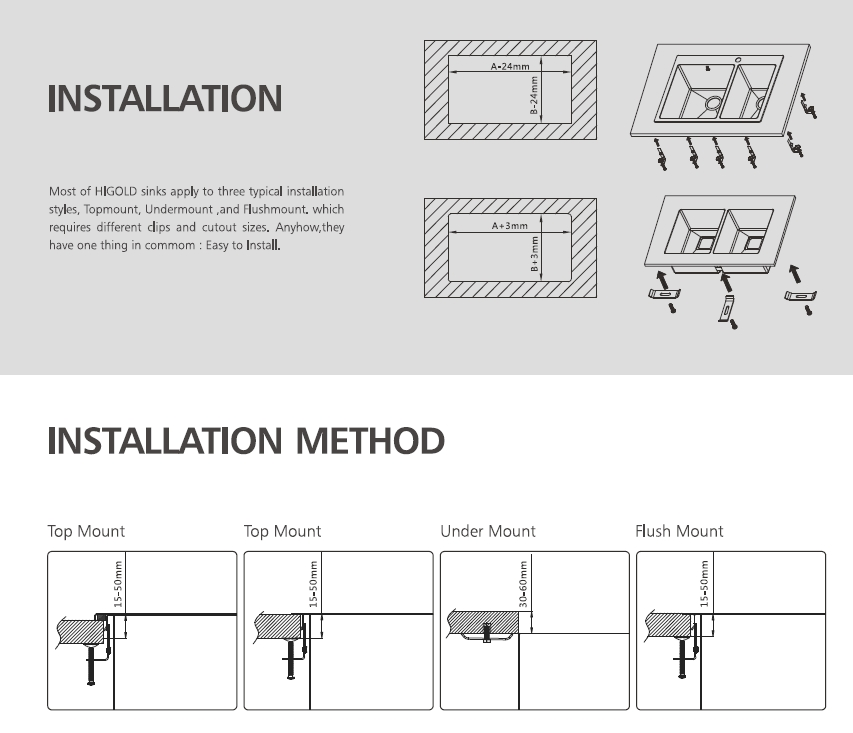
Sinks with drains
Sinks with drains pay great attention to drainage functions in their design, and usually have a dedicated drain table or groove area for drainage and cleaning of food residues. This type of sink is very suitable for families who like to prepare a large number of ingredients in the kitchen.
1. Advantages of sinks with drains
● Easier to clean ingredients: The design with drains makes it easy to put the washed ingredients directly on the drain table to avoid splashing water, and also reduces the accumulation of water and oil stains.
● Versatile: Some sinks with drains include clean space for cutting vegetables, placing tableware, etc., which increases the kitchen work surface.
● Space saving: The drainer and sink are combined into one, which reduces the need for a separate drainer in the kitchen and saves space.
2. Suitable people for sinks with drains
It is suitable for families who need to wash a lot of food, especially those who like to cook or prepare meals frequently. It is very suitable for large kitchens and can help users better control the water flow when washing food and keep the countertop clean.
3. Disadvantages of sinks with drains
● Cleaning is more complicated: Food residues and water stains on the drain are easy to accumulate. If not cleaned in time, it may cause the sink to become dirty for a long time.
● Occupy countertop space: The design with drains occupies the kitchen work surface to a certain extent. It is suitable for use in larger kitchens, but may not be accommodated in small kitchens.
Deep stainless steel sinks
Deep stainless steel sinks are popular for their deeper design. They are usually deeper than conventional sinks, which can effectively prevent water from splashing out of the sink and provide more space for large pots, tableware, etc.
1. Advantages of deep stainless steel sinks
● Avoid splashing: A deeper sink can effectively prevent water from splashing out of the sink, keeping the kitchen clean and tidy.
● Accommodate large items: The deep sink design provides enough space for washing large tableware such as large pots and bowls, which greatly facilitates the cleanup after cooking.
● It is more convenient to wash tall items: For tall items that need to be soaked, a deep stainless steel sink can provide enough soaking space to prevent food residues and stains from contacting the outside of the sink.
2. Suitable people for deep stainless steel sinks
Suitable for cooks who often use large pots and bowls in the family, especially in home kitchens or large kitchens, deep stainless steel sinks can better cope with heavy cleaning tasks.
3. Disadvantages of deep stainless steel sinks
● Inconvenient to use: For users with shorter height, the design of the deep sink may make it inconvenient to bend over during cleaning.
● Occupies a large space: Deep stainless steel sinks usually require a large space, so they may not be suitable for families with smaller kitchens.
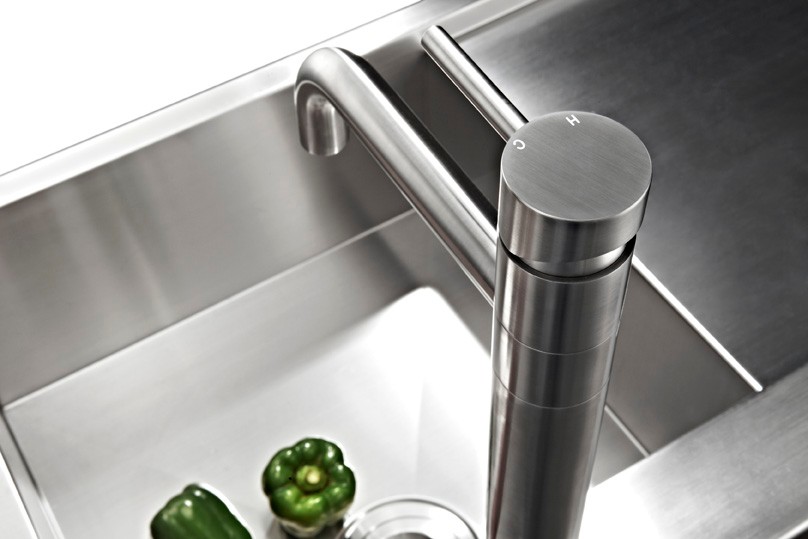
Undermount sink
An undermount sink is a sink installed under the countertop, with the edge of the sink sunken and flush with the countertop. This design is beautiful and easy to clean, and is a popular choice for many modern kitchens.
1. Advantages of undermount sinks
● Seamless design: The undermount sink is flush with the countertop, without protruding edges, and it is not easy to accumulate water stains and dirt during cleaning, so that the sink surface is always clean.
● Simple and beautiful: Due to its modern design style, the undermount sink has a simple and atmospheric appearance, which is very suitable for modern minimalist kitchens.
● Good waterproof performance: The edge of the sink sinks sinks, so that the water can flow smoothly into the sink, avoiding water stains dripping along the edge onto the countertop.
2. Applicable people for undermount sinks
Suitable for families who pursue simple, easy-to-clean kitchens with a modern design sense, especially for modern and fashionable kitchen design styles.
3. Disadvantages of under-hung sinks
● High installation requirements: The installation of under-hung sinks is relatively complicated and requires professional technicians to install them, otherwise the stability and sealing of the sink may be affected.
● Easy to damage: If the edge of the sink is accidentally hit, it may cause damage to the sink.

